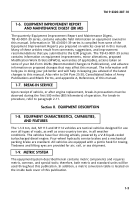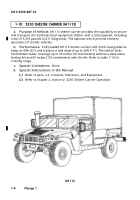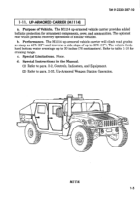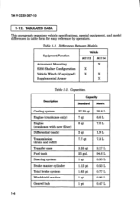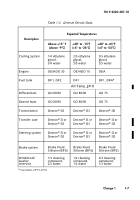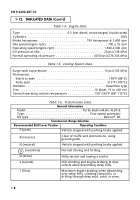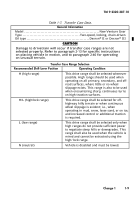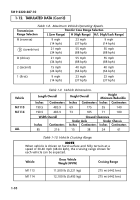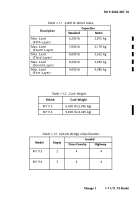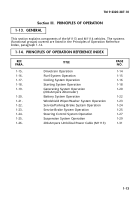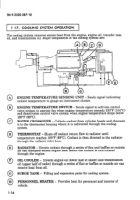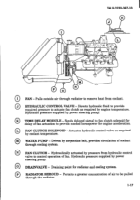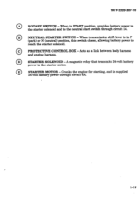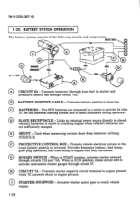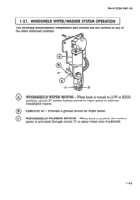TM-9-2320-387-10 - Page 28 of 277
1-15. DRIVETRAIN OPERATION
The drivetrain converts horsepower into mechanical force to move the vehicle.
Major components of the drivetrain are:
TRANSMISSION
– Adapts engine power to meet different driving
conditions. The automatic transmission has four forward speeds, a reverse, a
neutral and a park. A neutral safety switch prevents the vehicle from being
started with the transmission in any selector lever position except park and
neutral.
A
ENGINE
– The 6.5 liter V-8 turbocharged engine develops approximately
190 horsepower at 3,400 rpm. Engines equipped for deep water fording have a
specially-sealed dipstick, dipstick tube, and vented CDR valve.
B
TRANSFER CASE
– Directs engine-to-transmission power to front and rear
differentials simultaneously. This condition means the vehicle is always in
four-wheel drive. The transfer case allows for selection of three drive ranges
and a neutral position. (See table 1-7).
C
PROPELLER SHAFTS
– Link transfer case to differentials. Universal
joints, located at either end of the front and rear propeller shafts, permit
inline driving power between the transfer case and differentials even though
they are mounted at different angles.
D
F
E
G
DIFFERENTIALS
– Transmit driving power, via halfshafts and geared
hubs, to left and right wheels. The differential ensures power is applied to
the wheel having traction. This feature is called torque biasing.
HALFSHAFTS
– Transmit power from differentials to geared hubs.
GEARED HUBS
– Serve as the front wheel steering spindle and act as the
final drive components to front and rear wheels.
TM 9-2320-387-10
1-14
Change 1
~
A
B
C
D
E
F
G
D
E
F
Back to Top

